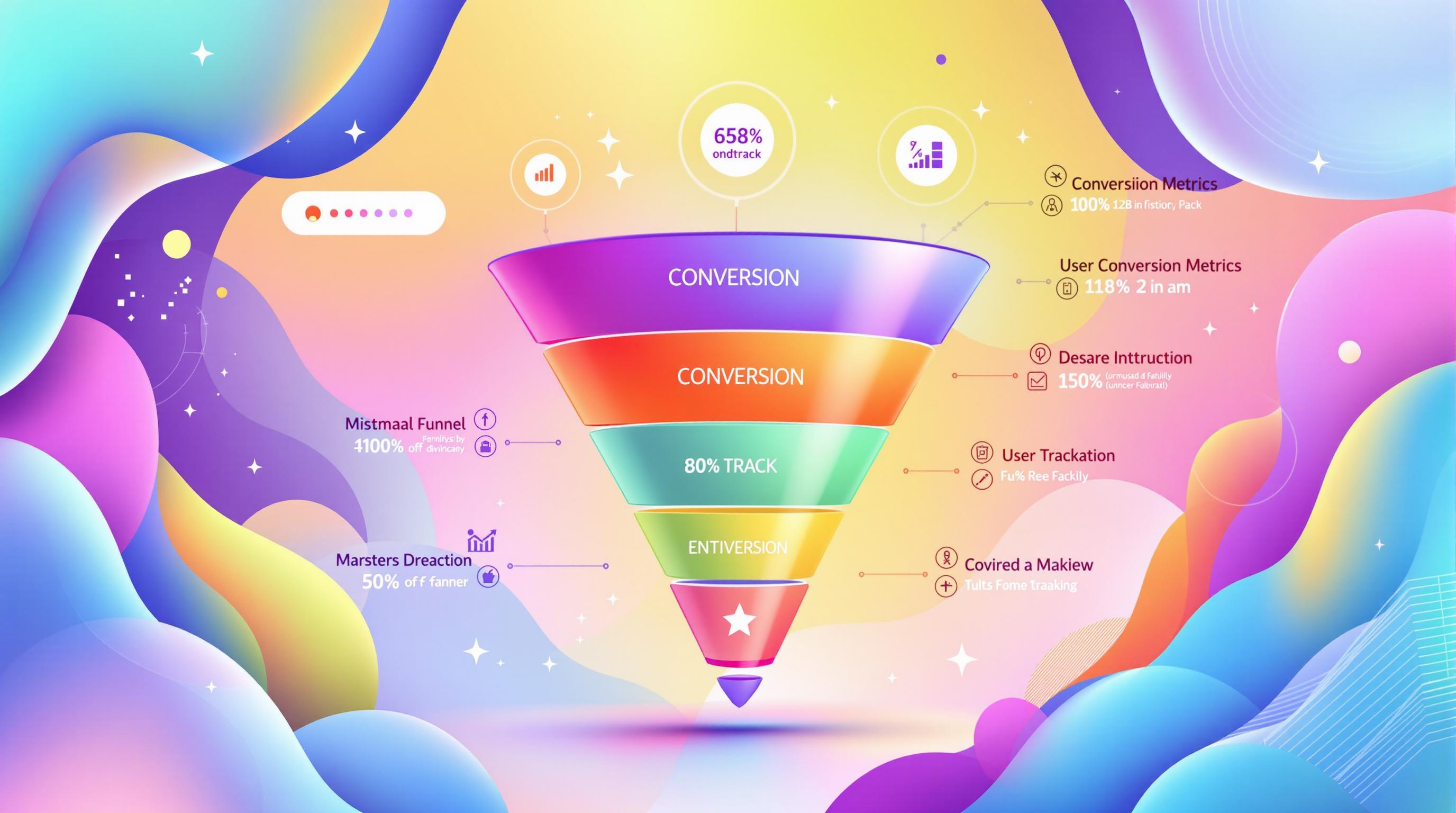GA4 helps businesses monitor and improve checkout speed, a critical factor in reducing cart abandonment and boosting conversions. Here's what you need to know:
- Why It Matters: A 1-second delay can cut conversion rates by 7%. GA4 tools address checkout inefficiencies.
- Key Features:
- Event tracking for each checkout step
- Custom metrics like page load time
- Journey analysis to map bottlenecks
- Server-side tagging for precise data
- Setup Basics:
- Enable Enhanced Ecommerce Tracking.
- Use Google Tag Manager for efficient implementation.
- Optimization Tips:
- Track
page_load_timeandtime_to_interactiveparameters. - Build custom reports to identify delays by device, region, or browser.
- Set alerts for slow performance or high drop-off rates.
- Track
Quick Tip: Use server-side tagging for better data accuracy, and simplify checkout forms to reduce abandonment. GA4's real-time tools and tailored reports make it easier to enhance the checkout process while respecting user privacy.
The NEW GA4 Checkout Journey Report

How to Set Up GA4 for Tracking Checkout Speed
Setting up GA4 to monitor checkout speed involves a few key steps to ensure your data is accurate and actionable. Here's how to get started.
What You Need Before You Begin
To track checkout speed in GA4, make sure you have the following in place:
- Enhanced Ecommerce Tracking: This must be enabled, and your data layer should include checkout events with structured parameters.
- Google Tag Manager (GTM): Use GTM to deploy your tracking codes efficiently.
Before publishing anything, test your data layer setup using GTM's preview mode. This ensures everything is functioning as expected before you start collecting metrics like page load times.
How to Track Page Load Times with Event Parameters
Once you've completed the setup, you can track page load times by using event parameters tied to the begin_checkout event. Here's a breakdown of the key parameters:
| Parameter | Purpose | Example Value |
|---|---|---|
| page_load_time | Measures how quickly the checkout page loads | 2.5 (seconds) |
| time_until_interactive | Tracks how long it takes for the page to become responsive | 1.8 (seconds) |
| currency | Specifies the transaction's currency | USD |
| value | Reflects the cart's total value | 99.99 |
Here’s an example of how your data layer might look:
dataLayer.push({
'event': 'begin_checkout',
'page_load_time': 2.5,
'time_to_interactive': 1.8
});
For greater accuracy, Web Star Research suggests using server-side tagging. This method avoids issues caused by client-side blockers, such as ad blockers, ensuring your checkout speed data is reliable.
Creating Metrics and Reports for Checkout Speed
Once you've set up page load time parameters, the next step is analyzing checkout speed through tailored metrics and reports.
Setting Up Custom Metrics for Page Speed
Google Analytics 4 (GA4) allows you to track specific aspects of checkout speed using custom metrics. Here's how to configure key parameters under Admin > Custom Definitions > Custom Metrics:
| Setting | Configuration | Purpose |
|---|---|---|
| Metric Name | checkout_load_time | Identifies the metric in reports |
| Scope | Event | Tracks data for each event individually |
| Unit | Second | Measures time in seconds |
| Parameter | page_load_time | Uses the parameter you defined earlier |
You can create separate metrics for each stage of the checkout process to identify specific performance bottlenecks. These metrics lay the groundwork for building detailed reports in GA4.
Building Reports to Monitor Checkout Speed
With your metrics in place, GA4's Exploration feature helps you analyze patterns and uncover areas for improvement.
To build a report:
- Open Explore in GA4 and start with a "Blank" template.
- Add your custom metrics alongside important dimensions like:
- Device category
- Browser type
- Geographic location
- Time of day
For more detailed analysis, create segments to highlight slower experiences for specific user groups. You can also set up alerts if the checkout page takes longer than 3 seconds to load, helping you catch potential technical issues early.
Key performance metrics to monitor include:
| Metric | Why It Matters |
|---|---|
| Average Load Time | Helps reduce user frustration by minimizing delays |
| Time to Interactive | Tracks how quickly users can interact with forms |
| Geographic Variations | Identifies regional performance challenges |
| Device Performance | Compares mobile and desktop optimization needs |
sbb-itb-38e9f15
Using GA4 Data to Improve Checkout Speed
Spotting Delays in the Checkout Process
GA4 offers powerful tools to identify where your checkout process might be slowing down. By analyzing event parameters and custom metrics, you can locate specific trouble spots causing delays or user frustration.
Here’s a quick breakdown of common issues and how to address them:
| Analysis Type | What to Look For | Suggested Action |
|---|---|---|
| Page Load Analysis | Pages taking over 3 seconds | Improve frontend and backend speed |
| Drop-off Points | High abandonment on certain steps | Simplify forms and streamline the UI |
| Geographic Performance | Variations in loading by region | Use CDN solutions for faster delivery |
| Device Impact | Speed gaps between devices | Optimize for mobile and desktop users |
Pay special attention to payment pages - third-party integrations often cause slowdowns here.
How to Speed Up Your Checkout Process
Once GA4 has helped you identify the bottlenecks, it’s time to make targeted improvements. Here’s what you can do:
-
Technical Improvements
- Speed up server response times.
- Reduce JavaScript execution.
- Switch to modern image formats.
- Enable browser caching to improve load times.
-
Simplify the Process Using GA4 Insights
- Cut unnecessary form fields if funnel data shows drop-offs.
- Offer guest checkout if users prefer it.
- Add auto-fill features to save time.
- Use progressive loading based on device capabilities.
-
Keep an Eye on Performance
Set up GA4 alerts to catch and fix checkout speed issues as they happen:
Alert Type Threshold Page Load Time Over 3 seconds Drop-off Rate More than a 40% increase Error Events Any occurrence Geographic Delays More than a 5-second difference
Use GA4’s real-time reporting to monitor these metrics and keep your checkout process running smoothly. If you need expert help, Web Star Research offers services to set up advanced tracking while staying privacy-compliant.
Advanced Tools and Best Practices
Improving Accuracy with Server-Side Tagging
Server-side tagging offers a better way to track checkout speed by sending data directly from your servers to GA4. This method bypasses ad blockers, reduces frontend processes, and provides more accurate metrics compared to traditional client-side tracking.
When using server-side tagging for checkout speed, focus on these key areas:
- Direct Server Measurements: Gather data on actual server response times.
- Custom Metric Creation: Define specific speed metrics for each step in the checkout process.
- Real-Time Monitoring: Use server logs to confirm the accuracy of your data.
- Performance Optimization: Cut down on client-side processing to improve overall performance.
"Server-side tagging is a game-changer for data accuracy and reliability. It helps businesses make informed decisions with more precise data" [1]
Collecting Data While Staying Privacy-Compliant
Advanced tools can improve accuracy, but they must be used responsibly to protect user privacy. Privacy-conscious speed tracking ensures both accurate insights and customer trust.
Here are some privacy measures to consider for checkout speed tracking:
| Requirement | How to Implement |
|---|---|
| Consent Management | Use GA4's consent mode to respect user choices. |
| Data Minimization | Only collect the speed metrics you truly need. |
| Geographic Compliance | Follow location-based tracking rules. |
| Data Retention | Set limits on how long you store collected metrics. |
To stay compliant with regulations like GDPR and CCPA, anonymize speed data, use GA4's consent mode, and follow location-based tracking guidelines. These steps help you gain meaningful insights while safeguarding user privacy.
Conclusion
Key Takeaways
GA4's tools for tracking checkout speed offer valuable insights to refine the customer journey. By using custom metrics and server-side tagging, businesses can measure checkout performance with precision. GA4 brings together page load data, user behavior insights, and privacy-focused data collection to create an effective optimization system.
Here’s what GA4 checkout speed tracking can deliver:
| Feature | What It Does |
|---|---|
| Real-Time Monitoring | Quickly identifies checkout speed problems |
| Cross-Device Tracking | Ensures consistent measurement across mobile and desktop |
| Revenue Analysis | Links checkout speed directly to conversion rates |
Steps to Get Started
Begin by setting up custom metrics for speed indicators and creating detailed performance reports in GA4. Key actions to focus on include:
- Tracking page load times
- Building custom reports for analyzing speed
- Setting alerts for when performance drops below set thresholds
- Reviewing GA4 reports regularly to monitor improvements
If you need expert help with implementation, Web Star Research provides customized GA4 solutions that prioritize accurate data tracking and privacy standards.



